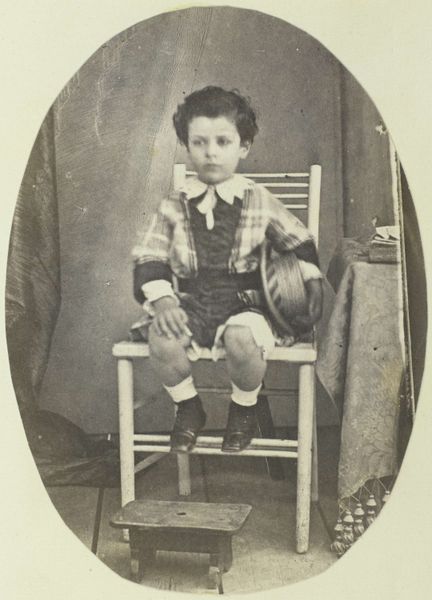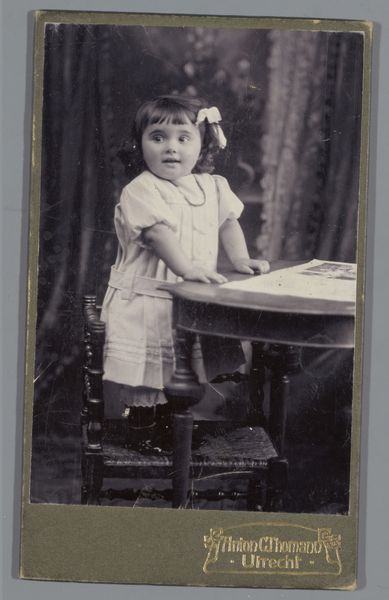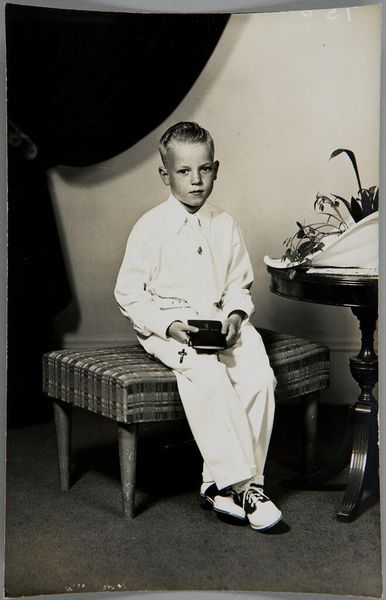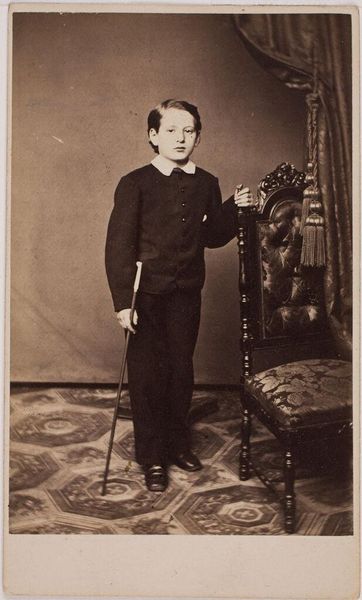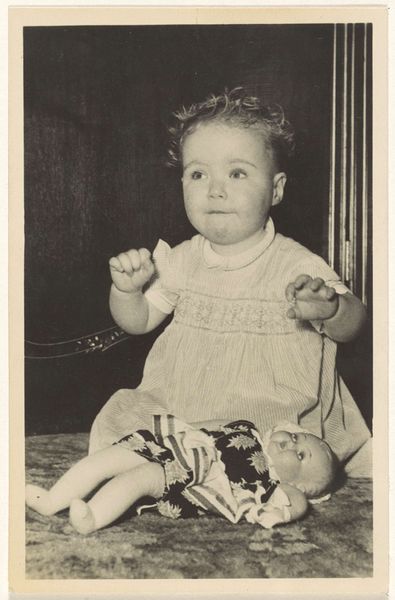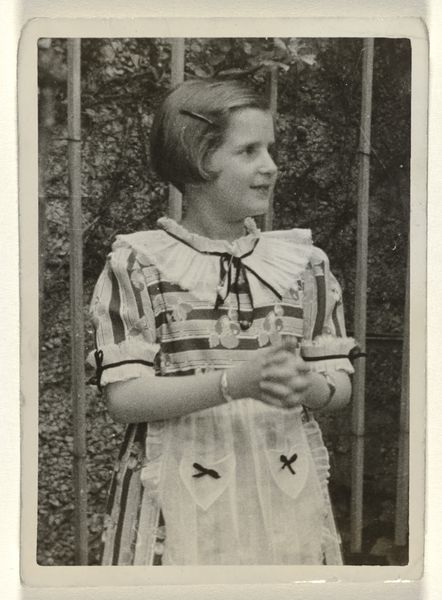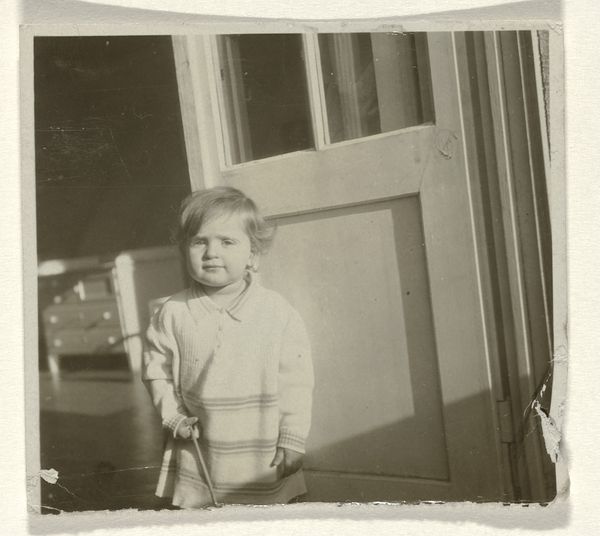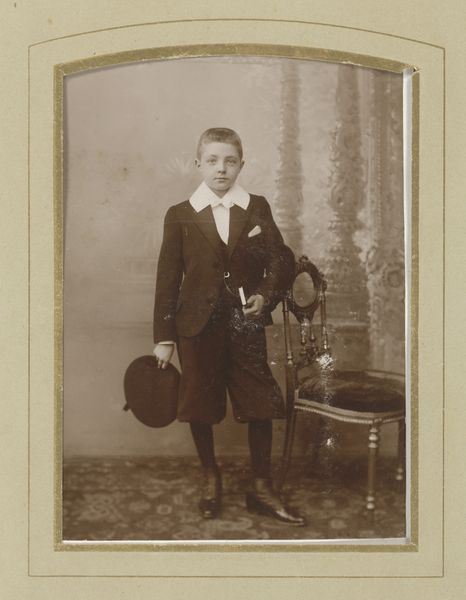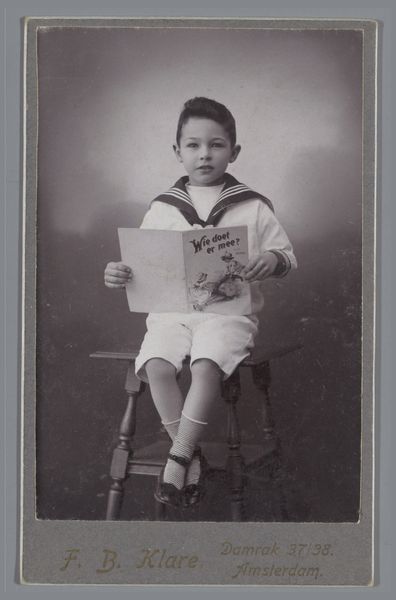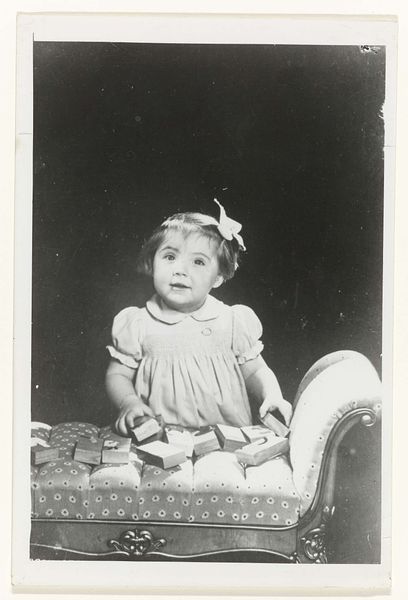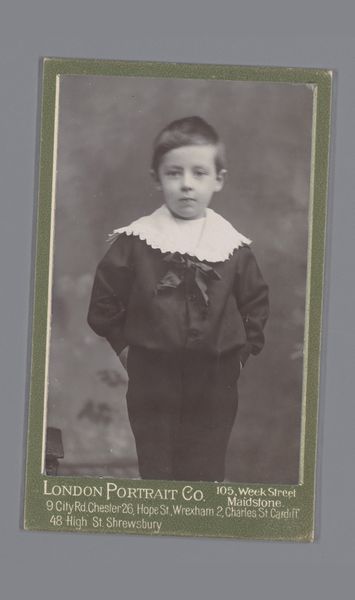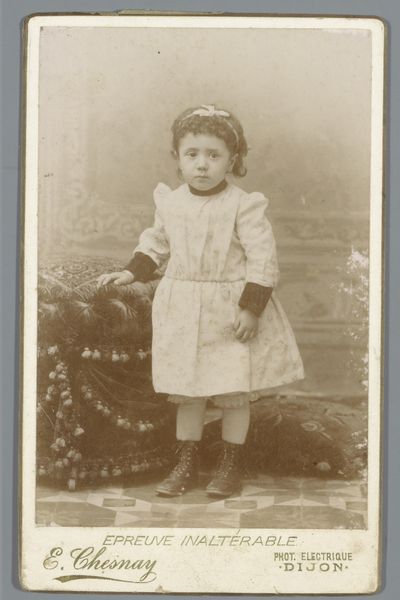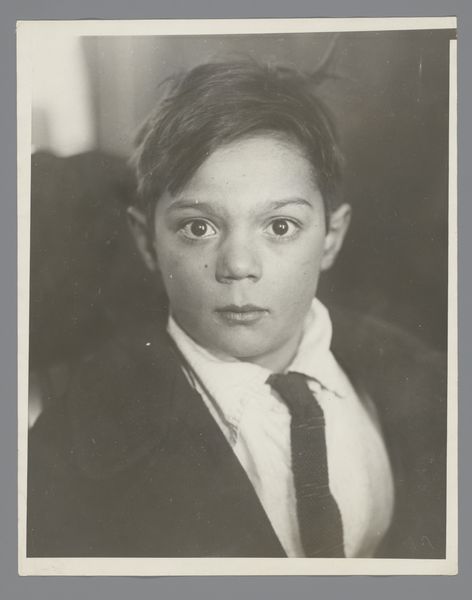
Hnayneh Madani’s parents’ home, the liwan, Saida, Lebanon, 1948-53. Hashem el Madani 2007
0:00
0:00
Dimensions: image: 191 x 288 mm
Copyright: © Akram Zaatari, courtesy Hashem el Madani and Arab Image Foundation, Beirut | CC-BY-NC-ND 4.0 DEED, Photo: Tate
Curator: This photograph, taken between 1948 and 1953, captures Hnayneh Madani in his parents’ home in Saida, Lebanon. It's from a series by Hashem el Madani, now brought to light by Akram Zaatari. Editor: There's a quiet solemnity to this image. The boy’s gaze is so direct, almost confrontational, yet his posture is relaxed. Curator: Madani's studio portraits were vital social documents for the community of Saida. They offered a space for individuals to craft their public image. Editor: The flowers and foliage, the sewing machine in the background – these domestic symbols speak volumes about daily life and the cultivation of beauty even amidst the ordinary. Curator: Exactly, and consider the role of photography itself. In a post-colonial context, studio portraits became powerful tools for self-representation. Editor: It makes you think about how we construct identity, and the objects we choose to surround ourselves with. Curator: Indeed, this image speaks to the complex interplay between individual identity and collective history. Editor: A poignant reminder of the stories held within everyday scenes.
Comments
tate 6 months ago
⋮
http://www.tate.org.uk/art/artworks/zaatari-hnayneh-madanis-parents-home-the-liwan-saida-lebanon-1948-53-hashem-el-madani-p79456
Join the conversation
Join millions of artists and users on Artera today and experience the ultimate creative platform.
tate 6 months ago
⋮
This work is one of a series of black and white silver gelatin photographs of varying sizes that are collectively titled Objects of study/The archive of studio Shehrazade/Hashem el Madani/Studio Practices. All of the photographs were taken by the Lebanese commercial photographer Hashem el Madani between 1948 and 1982 and compiled into the present group, 117 of which are in Tate’s collection, by the Lebanese artist Akram Zaatari. All of the photographs include people, either alone, in pairs or in small groups, and most were taken in Madani’s studio, although some were shot outside and in his subjects’ homes. The series features men and women and covers a wide age range from babies to elderly people. Almost all of the sitters assume poses deliberately for the camera, sometimes accompanied by props or costumes, and most gaze directly towards the lens. Many of the pictures show subjects interacting in various ways, including embracing, kissing and acting out scenes, such as a mock wrestling match. The photographs are mostly tightly cropped, with the sitter or sitters filling most of the frame, although in some cases the figures are positioned further away from the camera, for instance when shown sitting at a table or standing behind a chair. The photographs tend to have sparse backgrounds, often dominated by a blank posterior wall. They are mounted on white paper, displayed in plain white frames and signed on the back by Madani. Many of them have been organised into categories by Zaatari – such as a group featuring men dressed as Syrian resistance fighters and a collection depicting newly married couples – while the rest are presented individually. Zaatari has stated that although he prefers these groups to be displayed together, this is not a requirement (Akram Zaatari, email to Rachel Taylor, 24 April 2008, Tate Acquisition file).
